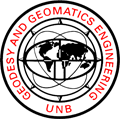
GAPS PROCESSING STRATEGY SUMMARY |
|
|---|---|
| Software Version | GAPS v6.0.0 r587 |
| Developed At | Department of Geodesy and Geomatics Engineering University of New Brunswick |
| Contacts | GAPS Development Team email: gaps [at] unb.ca Dr. Marcelo Santos email: msantos [at] unb.ca |
| GNSS System(s) | GPS, Galileo [1], BeiDou |
| File Type | RINEX 2.xx, 3.xx, receiver raw data, and compressed packages Raw files accepted: Trimble DAT and RT17; Ashtech R, U, B-, E-, S-, and D-; Leica LB2, MDB, and DS; Topcon/Javad JPS; Septentrio SBF; Navcom; Conanbinary; TurboBinary; u-blox UBX; Canadian Marconi Binary; Rockwell Zodiac Binary; Motorola Oncore; ARGO; Texas Instruments 4100 GESAR, BEPP/CORE, and TI-ROM. Compressed packages accepted: 7z, BZIP2, GZIP, TAR, ZIP, CAB, ISO, MSI, RAR, and Z. |
| Downloaded Products | GPS: IGS [2] or NRCan [3] Final and Rapid orbit and clock files as well as IGS Ultra-Rapid files Galileo/BeiDou: IGS MGEX [4] Final orbit and clock files from the following contributors: CODE - Center for Orbit Determination in Europe [5] CNES - Centre National d'Etudes Spatiales [6] GFZ - German Research Centre for Geosciences [7] WUH - Wuhan University [8] TUM - Technische Universitat Munchen [9] IGS weekly ANTEX files (igsyy_wwww.atx) [10] P1C1yymm.DCB, P2C2yymm.DCB, and P1P2yymm.DCB monthly differential code bias files from CODE |
MEASUREMENT MODELS |
|
| Basic Observables | GPS: L1 and L2 undifferenced carrier-phase & pseudorange Galileo: E1 and E5a undifferenced carrier-phase & pseudorange BeiDou: B1 and B2 undifferenced carrier-phase & pseudorange If both P1 and C1 are reported, priority will be given to P1 |
| Observable Strategy for RINEX 3.xx file processing For GPS L2C For GPS L5 For Galileo E5b For Galileo E5 |
GPS: P1: C1W (if reported) C1: C1C (if reported) C2: C2W as default, otherwise C2P L1: L1W as default, then L1X followed by L1C L2: L2W as default, then L2P P2: C2C and C2C/C2W L2: L5X and C5X/L2W Galileo: C1: C1X as default, otherwise C1C E1: L1X as default, otherwise L1C C5: C5X as default, otherwise C5Q E5: L5X as default, otherwise L5Q C5: C7X as default, otherwise C7Q E5: L7X as default, otherwise L7Q C5: C8X as default, otherwise C8Q E5: L8X as default, otherwise L8Q BeiDou: C1: C1I as default, otherwise C1Q B1: L1I as default, otherwise L1Q C2: C7I as default, otherwise C7Q B2: L7I as default, otherwise L7Q If multiple observable types reported on same frequency, user-selected or default observable is given priority |
| Modelled Observables | Undifferenced, ionosphere-free linear combination [11] |
| Processing Modes | Static or Kinematic |
| Weighting Scheme (sigma) | Carrier-Phase: Default: 0.015 m at zenith Pseudorange: Default 2 m at zenith Elevation angle-dependent weighting, (sin(el), correlations ignored) |
| Neutral Atmosphere Delay a priori value Gradients |
Estimated by default Estimation automatically terminated if receiver rises above 50,000 ft (15,240 m) Available NAD options: - Raytrace [12] using NCEP Re-Analysis I (NOAA) - Raytrace [12] using CMC Global NWM (Environment Canada) - Raytrace [12] using CMC Global NWM Predicted (Environment Canada) - GPT2.1w [13] - ESA2.5 [14] - UNB3m [15] - None (a priori NAD of 0 will be applied) The Vienna mapping functions [16] will be applied to all models by default with the Neill mapping functions [17] as an additional option Gradient model: - Linear horizontal gradients with Chen and Herring gradient mapping function [18] NOT applied by default |
| Ionosphere | 1st order effect: eliminated by dual-frequency observations in linear combination [11] 2nd order effect: no corrections applied Other effects: no corrections applied |
| RHC Phase Rotation Correction |
Satellite antenna phase wind-up applied [19] |
| Satellite Corrections | Center of mass offset: SV specific z-offsets & block-specific GPS
x- & y- offsets (from manufacturers) from file igsyy_wwww.atx
based on GFZ/TUM analysis using fixed ITRF2000 coordinate system [10] BeiDou PCOs: satellite- and MGEX provider-specific x-, y-, and Z-offsets - CODE: IGS MGEX standard [4] - GFZ: Dilssner (2014) [22] - WUHAN: Guo (2016) [23] Galileo PCOs: satellite--specific x-, y-, and Z-offsets - All Product Providers: IGS MGEX standard [4] At this time, no PCV corrections are applied to Galileo/BeiDou satellite antennas Antenna phase center correction: block-specific nadir angle-dependant "absolute" PCVs applied from file igsyy_wwww.atx; no azimuth corrections applied [10] Differential Code Biases: C1 corrected to P1 using using monthly P1-C1 DCB solution provided by CODE |
| Receiver Corrections | Antenna phase center correction: "absolute" elevation- & azimuth-dependent
(when available) PCVs obtained from igsyy_wwww.atx [10] Optional use of user-provided receiver antenna calibration file Antenna phase center offset: L1/L2 offsets applied from file igs05_wwww.atx [10] |
| Tidal Displacements | Solid Earth tide: IERS 2010 [20] Permanent tide: Not applied Solid Earth pole tide: Not applied Oceanic pole tide: Not applied Ocean tide loading: FES 2004, According to IERS (2010) [20] Ocean tide geocenter: Not applied Atmosphere tides: Not applied |
| Non-Tidal Loadings | Atmospheric pressure: not applied Ocean bottom pressure: not applied Surface hydrology: not applied Other effects: none applied |
| Plate Motions | Not applied |
| Relativistic Effects | Gravitational time delay: eq. 27 [11] |
ESTIMATED PARAMETERS |
|
| Adjustment | Sequential least squares with weighted constraints |
| Station Coordinates | Either estimated, held fixed, or constrained |
| Receiver Clock Bias | Modelled as white noise with a process noise of 1e10m^2 |
| Galileo Inter-System Bias | Modelled as white noise with a process noise of 1e10m^2 [1] |
| Beidou Inter-System Bias | Modelled as white noise with a process noise of 1e10m^2 |
| Neutral Atmosphere Delay | Residual zenith delay: estimated for each observed
epoch as a random walk with a default process noise of
5mm/sqrt(h) or any user-defined value Default mapping function: VMF1 (gridded) Gradients: Estimated for each observation as a random walk with a process noise of of 0.3 mm/sqrt(h) (User Defined) [18] |
| Ionospheric Correction | Not estimated for dual-frequency observations Computed iono delays for static solutions only [21] |
| Ambiguities | Estimated as real numbers |
PRECISE ORBIT & CLOCK PRODUCTS |
|
| Orbit Products | GPS: IGS [2] or NRCan [3] final and rapid as well as IGS ultra-
rapid products, depending on availability and user selection IGS final product used as default Galileo/BeiDou: IGS MGEX [4] final products from various MGEX providers |
| Orbit Interpolation | Adjustment of a 16th degree polynomial fitted to 6h-arc, with a 3h validity for each coordinate of each satellite. Orbits interpolated by default |
| Clock Products | GPS: IGS [2] or NRCan [3] final and rapid as well as IGS ultra-rapid products,
depending on availability and user selection IGS final product used as default Galileo/BeiDou: IGS MGEX [4] final products from various MGEX providers |
| Clock Interpolation | Adjustment of a 2nd degree polynomial for each 20 min arc for each satellite. Clocks interpolated to logging rate (by default) if 30-second clock product is used |
REFERENCES |
|
|---|---|
| [1] White, R.M., Langley, R.B. (2015). Precise Point Positioning With Galileo Observables. 5th International
Colloquium, Scientific and Fundamental Aspects of the Galileo Programme, Braunschweig, Germany, 27-29 October. [2] Dow J., Neilan R. E., Rizos C. (2009). The International GNSS Service in a Changing Landscape of Global Navigation Satellite Systems, Journal of Geodesy 83(3-4):191-198. DOI: 10.1007/s00190-008-0300-3. [3] ftp://ftp.igs.org/pub/center/analysis/emr.acn [4] Montenbruck O., Steigenberger P., Khachikyan R., Weber G., Langley R.B., Mervart L., Hugetobler U. (2014). IGS-MGEX: Preparing the Ground for Multi-Constellation GNSS Science, InsideGNSS 9(1), 42-49.2. [5] Prange, L., Dach, R., Lutz, S., Schaer, S., Jaggi, A., Rizos, C., Willis, P. (2016). The CODE MGEX Orbit and Clock Solution, IAG 150 Years: Proceedings of the IAG Scientific Assembly, Postdam, Germany. DOI:10.1007/1345_2015_161. [6] Loyer S., Perosanz F., Mercier F., Capdeville H., Marty J. (2012). Zero-Difference GPS Ambiguity Resolution at CNES–CLS IGS Analysis Center. Journal of Geodesy. Springer Berlin/Heidelberg. DOI: 10.1007/s00190-012-0559-2. [7] Deng, Z., Ge, M., Uhlemann, M., and Zhao, Q. (2014). Precise Orbit Determination of BeiDou Satellites at GFZ. IGS Workshop, Pasadena, California, USA. [8] Lou Y, Liu Y, Shi C, Yao X, Zheng F. (2014). Precise Orbit Determination of BeiDou Constellation Based on BETS and MGEX Network. Scientific Reports. 4:4692. DOI:10.1038/srep04692. [9] Steigenberger, P., Hugentobler, U., Louer, A., Perosanz, F., Prange, L., Dach, R., Uhlemann, M., Gendt, G., Montenbruck, O. (2014). Galileo Orbit and Clock Quality of the IGS Multi-GNSS Experiment. Advances in Space Research. [10] Montenbruck, O., Schmid, R., Mercier, F., Steigenberger, P., Noll, C., Fatkulin, R., Kogure, S., Ganeshan, A.S. (2015) Satellite Geometry and Attitude Models. Advances in Space Research 56(6): 1015-1029, DOI: 10.1016/j.asr.2015.06.019 [11] Kouba, J. (2009) A guide to using international GNSS service (IGS) products [12] Nievinski, Felipe G. (2009). Ray-tracing Options to Mitigate the Neutral Atmosphere Delay in GPS. M.Sc.E. thesis, Department of Geodesy and Geomatics Engineering Technical Report No. 262, University of New Brunswick, Fredericton, New Brunswick, Canada, 232 pp. [13] Lagler, K., Schindelegger, M., Böhm, J., Krásná, H., Nilsson, T. (2013). GPT2: Empirical Slant Delay Model for Radio Space Geodetic Techniques. Geophysical Research Letters, Vol. 40, 1069:1073, DOI:10.1002/grl.50288. [14] European Space Agency (2004). Galileo: Galileo Reference Troposphere Model for the User Receiver. ESA-APPNG-REF/00621-AM. [15] Leandro, R., Langley, R.B., and Santos, M.C. (2008). UNB3m_pack: A Neutral Atmosphere Delay Package for GNSS. GPS Solutions, 12(1), pp. 65-70. [16] Boehm, J., Werl, B., and Schuh, H. (2006). Troposphere Mapping Functions for GPS and Very Long Baseline Interferometry From European Centre for Medium-Range Weather Forecasts Operational Analysis Data. Journal of Geophysical Research, 111, B02406, DOI:10.1029/2005JB003629. [17] Niell, A.E. (1996). Global Mapping Functions for the Atmosphere Delay at Radio Wavelengths. Journal of Geophysical Research, 100, 3227\963246. [18] Chen, G., Herring, T. A. (2012). Effects of Atmospheric Azimuthal Asymmetry on the Analysis of Space Geodetic Data, Journal of Geophysical Research, 102(B9), pp. 20489-20502. [19] Wu, J.T., Wu, S.C., Hajj, G.A., Bertiger, W.I., and Lichten, S.M. (1993). Effects of Antenna Orientation on GPS Carrier Phase. Manuscripta Geodaetica,18, 91-98. [20] McCarthy, D.D. and Petit, G. (2010). IERS Conventions. IERS Technical Note; 36 Frankfurt am Main: Verlag des Bundesamts für Kartographie und Geodäsie. 179 pp., ISBN 3-89888-989-6 [21] Leandro, R. F. (2009). Precise Point Positioning with GPS: A New Approach for Positioning, Atmospheric Studies, and Signal Analysis. Ph.D. Dissertation, Department of Geodesy and Geomatics Engineering, Technical Report No. 267, University of New Brunswick, Fredericton, New Brunswick, Canada, 232 pp. [22] Dilssner, F., Springer, T., Schönemann, E., and Enderle, W. (2014). Estimation of Satellite Antenna Phase Center Corrections for BeiDou. IGS Workshop, Pasadena, California, USA. [23] Guo, J., Xu, X., Zhao, Q., and Liu, J. (2016). Precise Orbit Determination for Quad-Constellation Satellites at Wuhan University: Strategy, Result Validation, and Comparison. Journal of Geodesy, 90(2), 143-159. DOI:10.1007/s00190-015-0862-9. |
|

